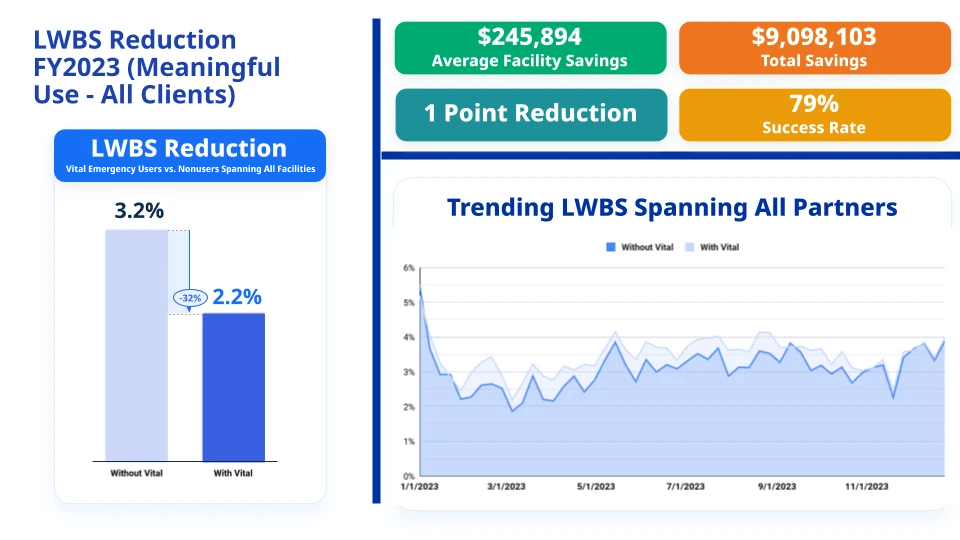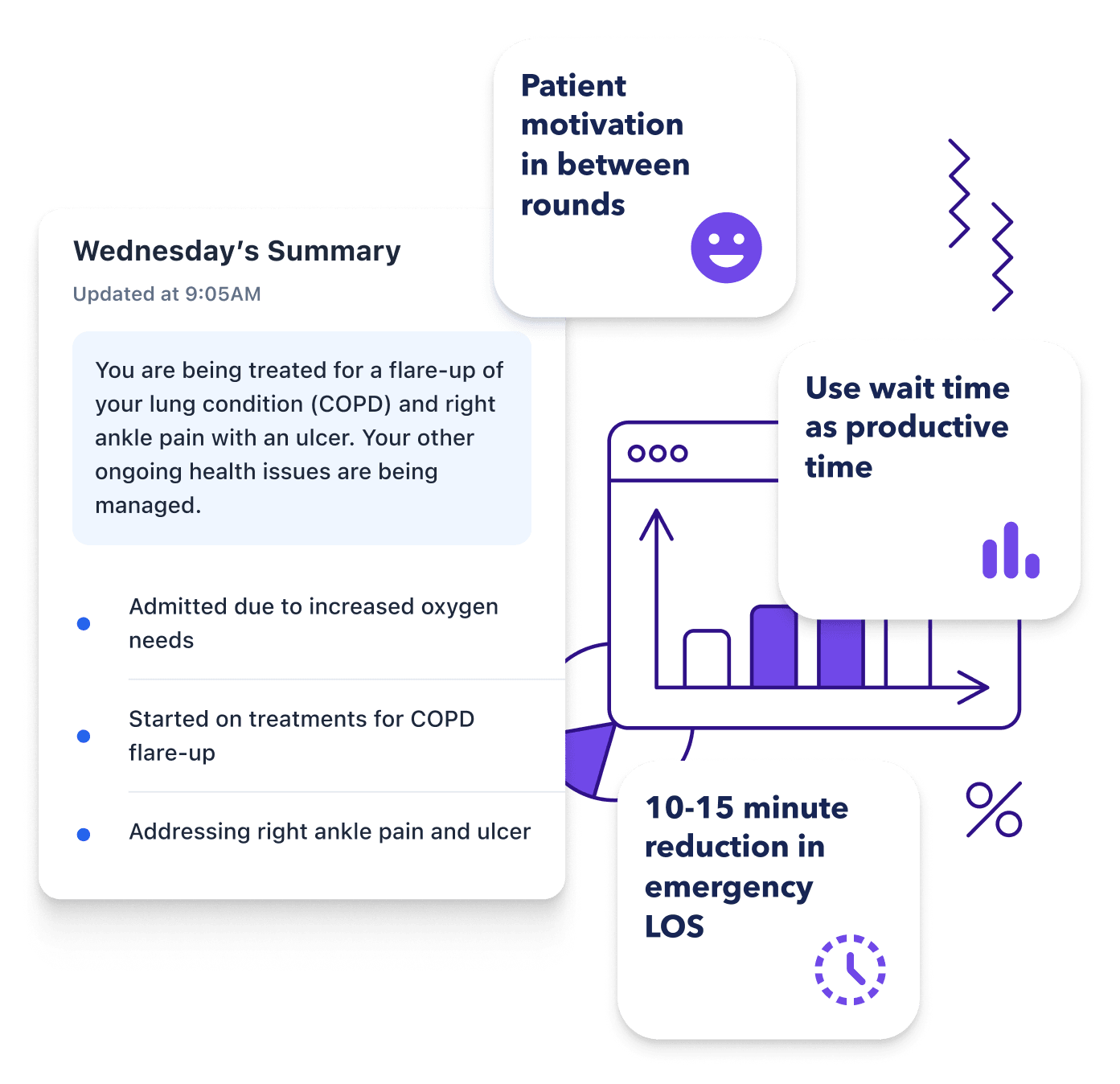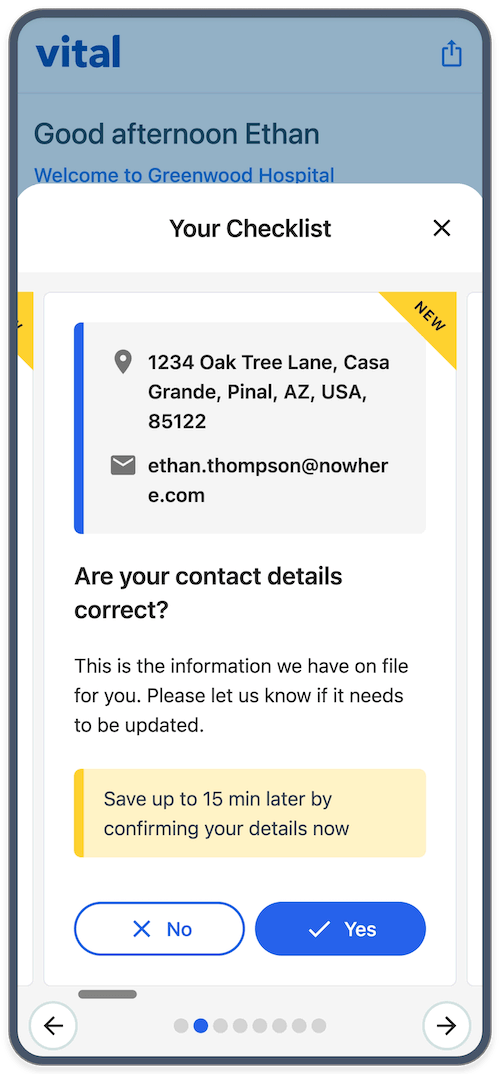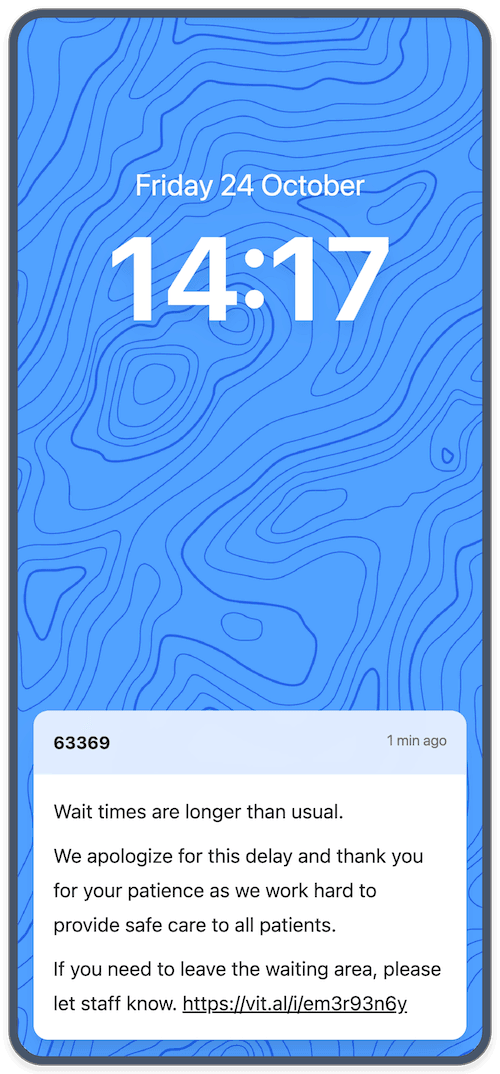
Use Case
Measurably improve outcomes
By tapping into real-time EHR data, Vital provides personalized guidance to millions of patients during hospital and emergency visits.

Measurably improve outcomes
By tapping into real-time EHR data, Vital provides personalized guidance to millions of patients during hospital and emergency visits. With 60%+ patient use, Vital changes patient behavior - and subsequent outcomes - for a majority of your population.
Up to 60% reduction in LWOBS / LWOT / AMA.
10-15 minute reduction in emergency length-of-stay (LOS) by preparing patients during wait times
More than half a day reduction in inpatient length-of-stay by prioritizing patient tasks, education, and coordinate with family to help.
Reduction in ER “bounce-backs” (return to the ER within 72 hours of a stay)
Reduction in hospital 30-day readmission

Use wait time as productive time
Vital keeps patients up-to-date on what’s happening during their visit. Vital uses AI to explain test results, predict wait times, and motivate patients.
While waiting, emergency patients are reminded to:
Prepare a list of home medications before nurse triage
Collect urine whenever they use the restroom to avoid later delays
Arrange a ride home when discharge is expected to avoid delays in clearing the room
Update contact details

Patient engagement in between rounds
In a busy hospital, nurse rounds may only occur every hour or two, leaving patients on their own most of the time. Instead of passively watching television, Vital uses behavioral AI and gamification to motivate patient actions to earn “health points”. Inpatient actions might include:
Reporting on ins-and-outs, ability to walk, shower, and use the toilet without assistance, all of which helps speed discharge.
Reminders for goals set clinical staff like “use your incentive spirometer” or “sit in a chair for meals instead of your bed”.
Patient education, assigned by AI for pre-surgery preparation or post-surgical recovery.

Automated patient acknowledgements
Vital automatically acknowledges patients who have been waiting for a long time. During busy times in the ER, when doctors and nurses are saving lives, patients in the waiting room can feel overlooked. Simply recognizing their wait and potential frustration significantly helps reduce the likelihood of patients leaving without being seen (LWOBS/LWOT) or against medical advice (AMA).

Decrease LWOBS/LWOT
Every time a patient walks out the door because of long waits or frustration, that’s potentially a $1K+ visit that vanishes. For an ER with 80,000 visits annually, halving a 5% left-without-being-seen (LWOBS) rate down to 2.5% keeps 2,000 patients within your system. That’s +$2M in revenue. Once you factor in potential in-network follow-ups, this number gets ever larger. It pays to keep people from walking out the door. Literally.
Vital has decreased emergency left-without-being-seen (LWOBS), left-without-treatment (LWOT), and left-against-medical-advice (AMA) for nearly every hospital who has implemented our software.
One large west-coast system saw an LWOBS decrease in 21 of 22 hospitals.
A Louisiana system saw a 63% decrease in LWOBS.
A prominent academic medical center, a 57% decrease in LWOT pre-triage.
Decrease in length of stay (LOS)
By preparing patients for their next conversation, Vital turns wait-time into productive-time. In the emergency department, patients are prompted for early urine collection, to ready their list of home medications, or to have their medical history on hand. These preparations can cut the length of stay by 10-15 minutes.
